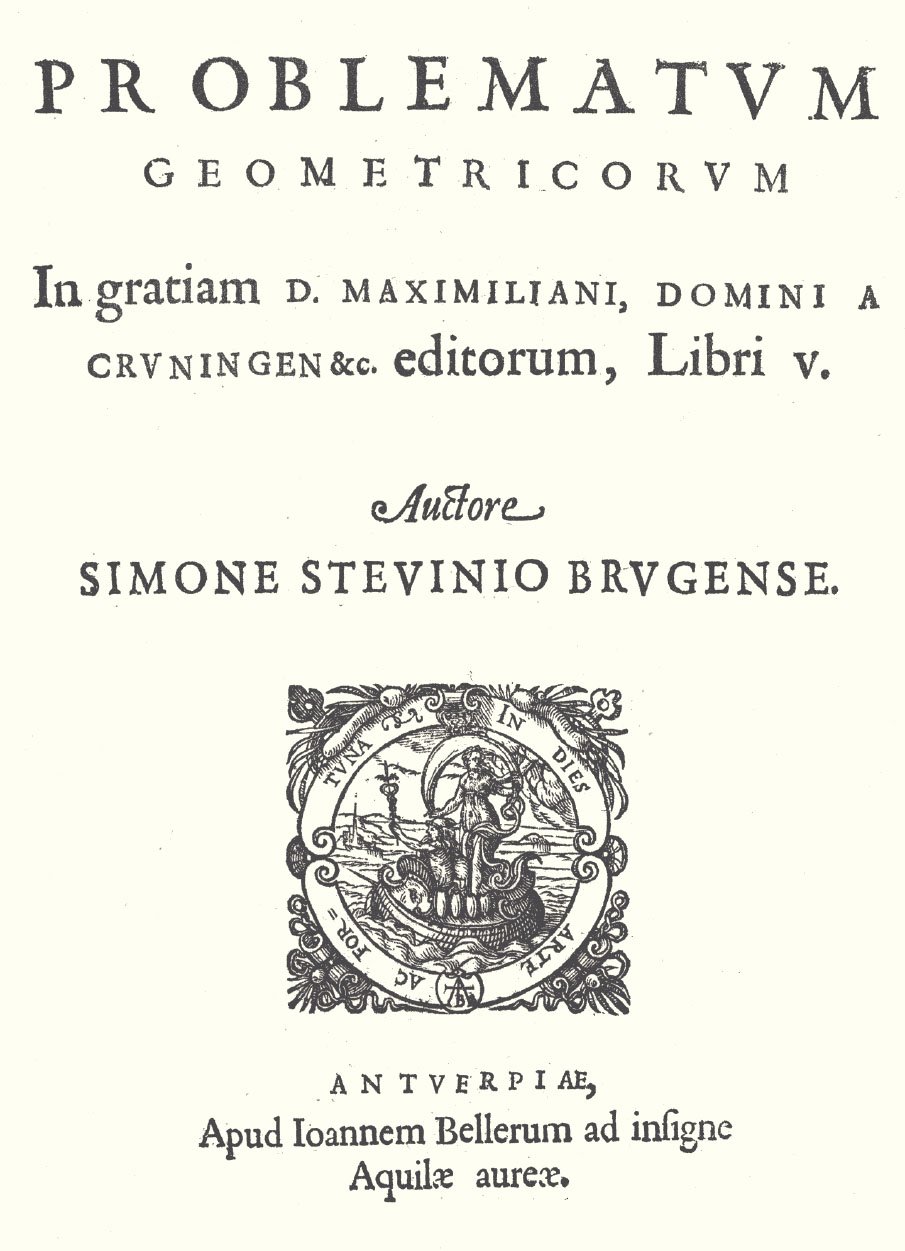The Rule of False Position and Geometric Problems - Regula Falsi and Geometric Problems
The mathematician, physicist, engineer, and inventor Simon Stevin used the rule of one false position in the solution of additional problems of geometric nature. He included his geometric investigations in the Problematum geometricorum (1583), which he structured in five books.

In the second book (De continuae quantitatis regula falsi) Stevin used the rule of one false position in the solution of four problems, doing some geometrical constructions with the help of similar figures. In the solution of each of the problems there are five phases: (1) Display of the data, (2) Display of the problem, (3) Construction, (4) Demonstration, (5) Conclusion. In the third phase the simple rule of false position is used. He generally began by constructing a figure similar to the desired one. If this figure satisfied all the required conditions, then the problem is solved. Otherwise, Stevin made use of proportionality theory to construct a new figure that did satisfy all the conditions.
We will present problems 1, 3, and 4 (problem 2 was presented at the beginning of this article). Given the expository nature of this article, we adapted the problems from the original text to modern language. We have tried to adhere to the spirit of the author.